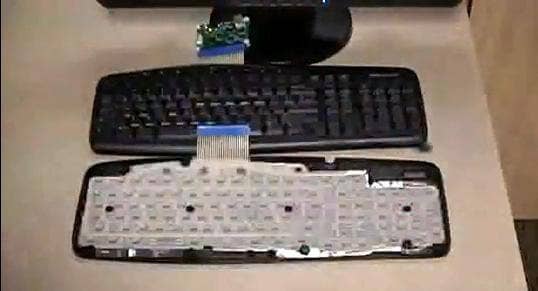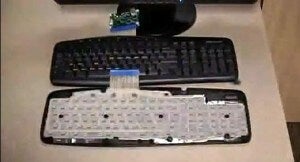Microsoft’s Cool New Pressure Sensitive Keyboard

Share
Some people approach a keyboard like a Ming vase and some approach it like a punching bag. Now, Microsoft is going to be able to tell the difference. A new prototype from MS's hardware division is capable of measuring the pressure applied to each key on the keyboard and relaying that information to your computer. Allowing for a whole new degree of freedom in the way you type, Microsoft sees the new keyboard as changing how you spell check, play games, and chat online. They've even got a contest to see which students can develop the best applications for the new hardware. Check out the demonstration video after the break.

On the outside it looks like a regular keyboard, but inside it knows how hard you're typing.
While this keyboard doesn't provide any feedback to the user's fingers, it does grant you a whole new way to interact with your software. It's somewhere, but not quite, on the level of haptics we've discussed before. Even with just visual feedback, however, the keyboard would allow a more immersive experience.
Where will we see this experience? Well first, most of us make errors when typing, hitting one stray key or double pressing others. By measuring differences in pressure, Microsoft can inform your spell checking software which letters are least likely to be intended by the user. Backspace/delete and arrow keys can have variable meaning depending on pressure. Want to delete a whole row of text? Jam down on the delete key. I can imagine the next generation of MS Office will have a whole series of variable responses based on pressure sensitive keys.
Of course, the much cooler applications will come from the worlds of gaming, where pressure sensitive controls may make the difference between virtual life and death. The simple simulation they show in the video is actually impressive enough that the pressure sensitive keyboard may sell well based on a gaming market alone.
I'm less certain of the applications for online chatting, where keyboard pressure could signal larger font size, or use of bold style. While it may help my dad stop banging on his laptop like a 70s typewriter, it will also probably lead to people unwillingly typing in all caps. I've had enough of that as it is.
Be Part of the Future
Sign up to receive top stories about groundbreaking technologies and visionary thinkers from SingularityHub.


The keyboard is probably going to be as resilient as the standard ones we use today. After all, most of the components are the same. Instead of simple off or on pegs under the keys, however, the pressure keyboard has carbon surfaces that vary in contact area depending on pressure. More parts to break, sure, but pressure sensitive electrical resistance is a relatively old technology.
The big deal is that unlike other new user-computer interfaces, the Microsoft keyboard at least has the potential to be widely available and soon. The same can't be said for the cooler siftables, reactables, and other mixed-media interactive devices we've discussed before. Of course, Microsoft has a history of sitting on cool gadgets rather than trying to launch them. Hopefully these guys will see that the market is ready for the keyboard now. If MS doesn't move quickly, another company may create a similar product. It would be better if Microsoft got the third party development rolling for the keyboard on their own terms.
Obviously Microsoft agrees as they've sponsored its use in the first annual UIST contest. The contest is geared to students that are interested in receiving a free keyboard, creating software that utilizes it, and possibly winning $2000. If you've already enrolled, here's another demo video to whet your competitive appetite. Good luck, and make sure to send me 10% if you win.
Related Articles

This Light-Powered AI Chip Is 100x Faster Than a Top Nvidia GPU

How Scientists Are Growing Computers From Human Brain Cells—and Why They Want to Keep Doing It

These Brain Implants Are Smaller Than Cells and Can Be Injected Into Veins
What we’re reading